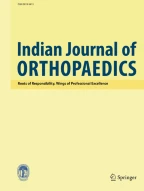
Peer review is a critical step in the process of publication of a scientific manuscript. The aim of reviewing is to evaluate the quality of a manuscript on various aspects and to make a recommendation to the editor for publication in the concerned journal. A good review considerably increases the quality of a manuscript and is beneficial for the reviewer and the author in creating future manuscripts.
While searching for reviewers, the editors tend to pick those who have accepted most invites as well as those who have completed most reviews, since these data are available in the database. It is difficult to predict a high quality reviewer based on the qualifications, training and experience [1]. Being invited as a reviewer is a recognition of expertise in that particular field.
It has been found that spending more than three hours in reviewing a manuscript did not increase the quality of a review but the quality improved with increasing time spent up to 3 h [2]. Younger reviewers up to the age of 60 years, training in statistics or epidemiology and current research investigator were significantly associated with good review quality according to assessments by editors [2].
The role of a reviewer starts when he/she receives an email from the editor inviting to review a manuscript. The information provided to them would be the title of the manuscript and the abstract. The reviewers have to make a decision to review or not based on this information depending on whether it falls within the remits of their area of specialization and expertise. It is advisable to accept or decline the invitation as soon as possible as it will give an opportunity to refer to other reviewers early and saves time for the editors and the authors. Since the publication by Atul Gawande on checklists in surgery and adopted by WHO in preoperative checks in operation theatres, their use has been established and growing in medicine [3, 4]. While there are exhaustive lists for assessing each type of article, we aim to provide useful basic checklists for reviewers while evaluating manuscripts and formulating their reviews.
Perform a basic scan of the above aspects of the manuscript. Tables 1 and 2 will aid in the basic review process of scientific manuscripts.
Table 1 Checklist during the initial assessment by the Editor and the Associate Editor (All contents under acceptable and satisfactory are in green colour shading and those under unacceptable and unsatisfactory are in light red colour shading)
Table 2 Checklist for evaluating manuscripts for the reviewers (All contents under acceptable and satisfactory are in green colour shading and those under unacceptable and unsatisfactory are in light red colour shading)
The colour coding of the tables would give an idea regarding the decision to accept or reject a manuscript. If the manuscript predominantly scores green shades (from Tables 1 and 2) on most issues mentioned, then the manuscript is probably good to be accepted provided major or minor revisions are not required. This objective tool will also help in rejecting a manuscript that is unsuitable when the manuscript scores red on most issues. Though this is likely to help decision-making, not every manuscript can be judged in green and red shades, some are likely to have grey areas, and herein the reviewer will be required to exercise discretion. Similarly, a checklist to review statistics of a paper may be used. How to present statistics in a paper has been given by previous publications [5,6,7].
The following is a summary of the most important Dos and Don’ts during reviewing.
This is usually quick since the manuscript has been reviewed once before and only the responses by the authors need to be checked along with corrections made. Hence, the time given for reviewing a revised manuscript is usually a week by most journals.
Book review should be undertaken by an expert in the particular field e.g. a foot and ankle surgeon writing a review of a book pertaining to upper limb would not be considered appropriate. These are our recommendations for writing a review on a book.
Authors and reviewers need to be cautious while submitting to preprint services such as MedRxiv because manuscripts submitted to these preprint repositories are likely to be picked up by the plagiarism detection software used by reputed journals and likely to show higher similarity. In addition, manuscripts once submitted to preprint servers could not be withdrawn. Plagiarised and unscientific manuscripts are reported to be excluded from these preprint services and the biggest drawback as acknowledged by these preprint servers is the lack of peer review. Since these manuscripts are cited on Google scholar and Crossref, there is a potential for dissemination of non-peer reviewed work to enter public domain and erroneously influence decision-making.